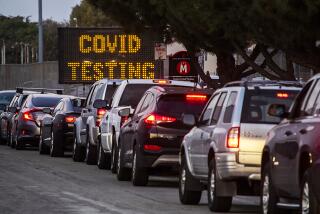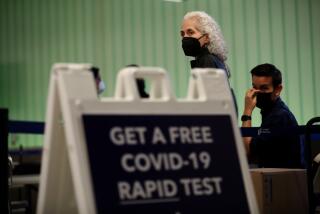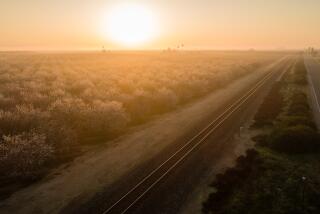Small towns across the Sierra fear tourists will bring coronavirus with them
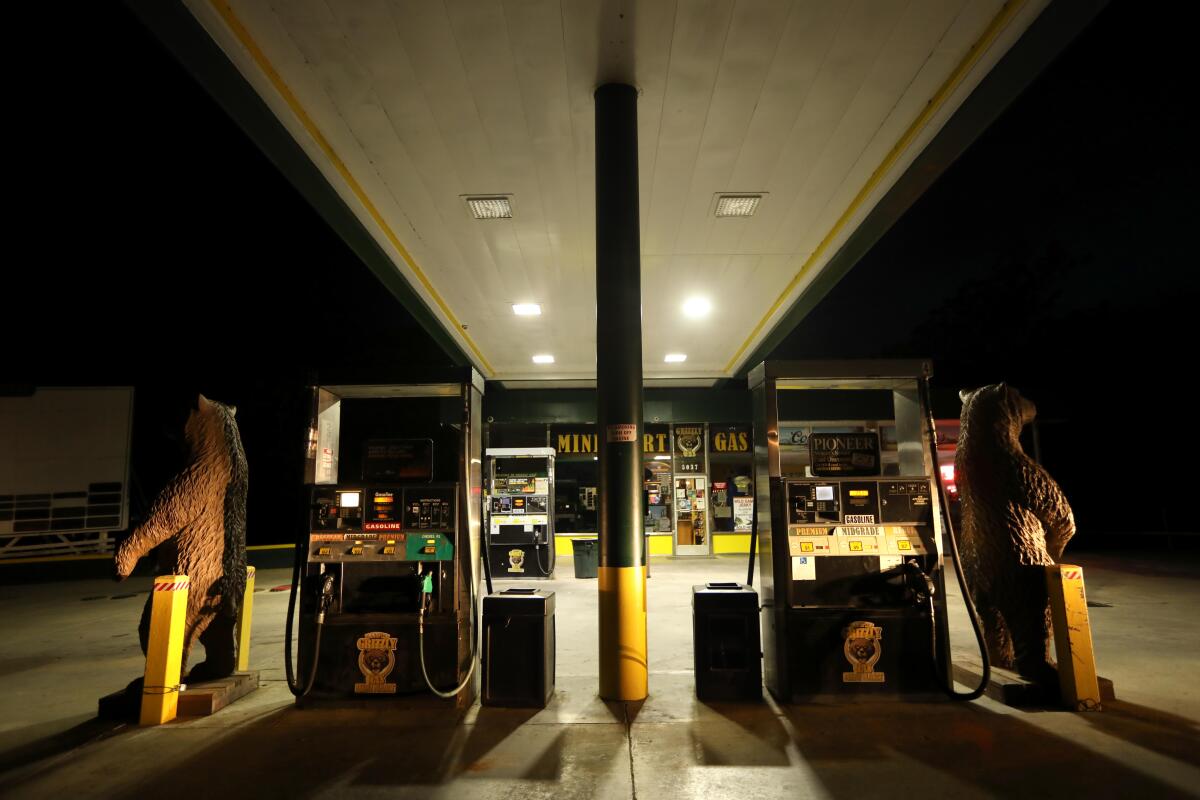
- Share via
The Sierra Nevada towns that dot Alpine County have no hospital. Nor do they have a single doctor’s office or clinic.
In this region of small unincorporated towns, the workers who comprise its fellowship of coronavirus first responders look a bit different from their counterparts in metropolises a few hours away. They’re a mix of civic-minded locals serving as volunteer firefighters and EMTs, and ambulance contractors who come when called from neighboring counties.
Until the coronavirus outbreak, a nurse practitioner ran the county’s only healthcare facility, but she recently left to help in an Army clinic in Texas. Now, residents must go out of the county, in some cases across the state line to Nevada, for healthcare, or call 911.
That’s why health and law officials in the least populous county in the state — and other nearby rural counties that draw anglers, backpackers and skiers — have united in a single message to tourists who can’t seem to keep away: Stay home.
Alpine County Sheriff Rick Stephens issued a blunt plea in late March to anyone considering a trip to the county.
“I, myself, haven’t seen my children or grandchildren in over two weeks,” he said in a statement. “My staff is isolating themselves on their days off so that we may be here to serve you. Lately, they had to respond to calls that were unnecessary due to visitors not following the advice given by the CDC and our local public health officer. You will be putting my staff and their families in danger from unnecessary exposure.”
Dr. Richard Johnson, the Alpine County public health officer, agreed there’s no medical care to treat visitors who fall ill with COVID-19.
“There’s no way we would even have ground or air resources to get them out,” Johnson said. “It’s a dangerous assumption that you can come and look at us as a safe haven. It is an unsafe haven.”
Remote California counties in recent weeks have seen waves of tourists hoping to escape their cramped apartments and stay-at-home orders in cities such as San Francisco and Los Angeles. In Alpine County a few weeks ago, visitors snapped up all the gas and food at one of the area’s few convenience stores, leaving shelves bare, tanks empty and residents without other options, Johnson said.
The county, which locals dub the “California Alps,” has just one confirmed coronavirus case among its 1,100 residents, which officials said may give visitors a false sense of security.
The community probably has more cases and instances of community spread, Johnson said. A new testing site will open soon in South Lake Tahoe in El Dorado County as part of the state’s initiative to expand testing in rural California. Johnson hopes that will provide his county with more perspective on the level of coronavirus activity there.
“I have no idea if there’s a lot of mild disease going on in the community,” he said, adding that the vast majority of the area’s older residents are “extremely compliant” with stay-at-home orders.
Although 17 of the Golden State’s remote counties still have fewer than 30 confirmed cases apiece, they grapple with the same problems as big cities: a shortage of testing kits and protective equipment for their first responders as they prepare for a possible surge in patients.
Many rural towns are served by one of California’s 34 critical access hospitals, which serve sparsely populated areas that are more than 35 miles from the nearest hospital, and house as many as 25 beds. These facilities, which include hospitals 15 miles from another hospital in mountainous terrain that makes emergency response especially challenging, have contracts with larger institutions.
Rural hospitals often transfer their most critical patients to larger facilities because they lack intensive care units. Many would probably need to transfer gravely ill COVID-19 patients who require ventilators.
“It’s not just having the piece of equipment,” said Jan Emerson-Shea, chief spokeswoman at the California Hospital Assn., an industry trade group. “You have to have the staffing who knows how to use it. They don’t have that level of skill set. They don’t provide that level of care, so just getting ventilators isn’t going to help them.”
But not all small hospital administrators have faith that larger hospitals will be able to take their COVID-19 patients if they, too, are overwhelmed.
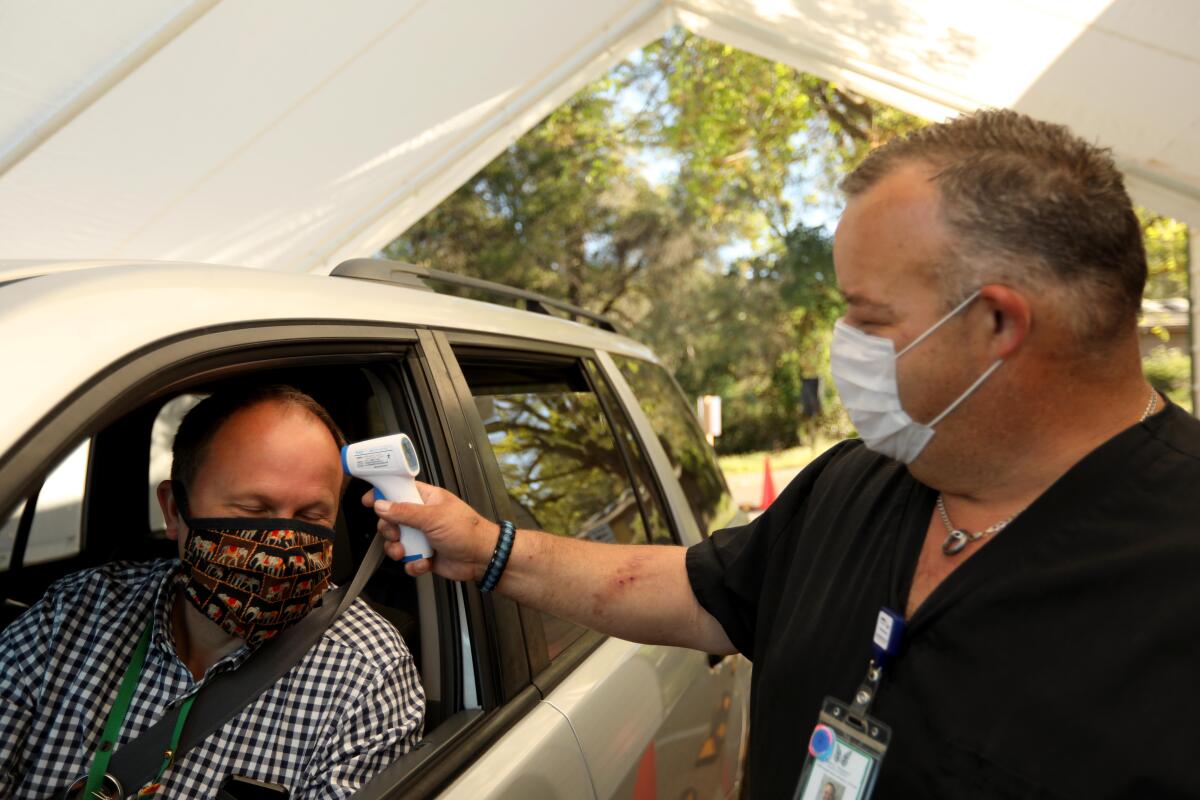
The only hospital in Mariposa County, known as John C. Fremont Healthcare District, does not have an ICU, but over the last two months it has worked with local public health officials to procure ventilators.
Normally, the hospital would transfer critical patients to Fresno or Modesto, each about 90 minutes away by ambulance, but if hospitals there are overwhelmed, Mariposa officials anticipate being told to seek help elsewhere.
Instead, since early March, the hospital’s nurses with ICU training and experience have provided a group of nurses with a crash course in critical care ventilator management.
Under normal circumstances, the hospital wouldn’t offer that training, in part because it doesn’t have an ICU. The hospital also created a COVID-19 wing that can serve up to 16 patients.
“We do have a plan because what we expect is to be told, ‘We can’t take your patients, you need to keep them there,’” said Thomas Wilkinson, the hospital’s chief nursing officer.
When this rural California county got its first coronavirus case last week, officials were ready with a plan they had hatched early on in the outbreak.
As cases of COVID-19 mount in California, counties like Mono — small, rural, wedged between the Sierra and the Nevada state line — have been left to vie for resources: not only medical treatment and equipment but also food and other essentials.
Stacy Corless, chair of the Mono County Board of Supervisors, said in March that the county has set up food banks and food delivery programs but “everyone is left empty-handed” because the local economy depends on the steady stream of tourism that officials have been forced to stave off.
Some locals were initially feeling wary about visitors who trickled into town looking to escape big-city outbreaks. The county supervisor said she was hounded in March by residents asking whether officials could put up a road block or check drivers’ IDs as they come up the mountain.
However, in early May, Corless said everyone had gained a new, optimistic perspective about the outbreak.
“As is the case pretty much everywhere, folks in Mono County now realize that we crushed the curve,” Corless said. “They are anxious to safely reopen the economy.”
Some 26 people have tested positive for the coronavirus in Mono County, and one person has died.
The hospital, Corless said, has basically been “flipped upside down” to accommodate a COVID-19 patient area and a “clean” area for others. By early May, the hospital had surge capacity, she said.
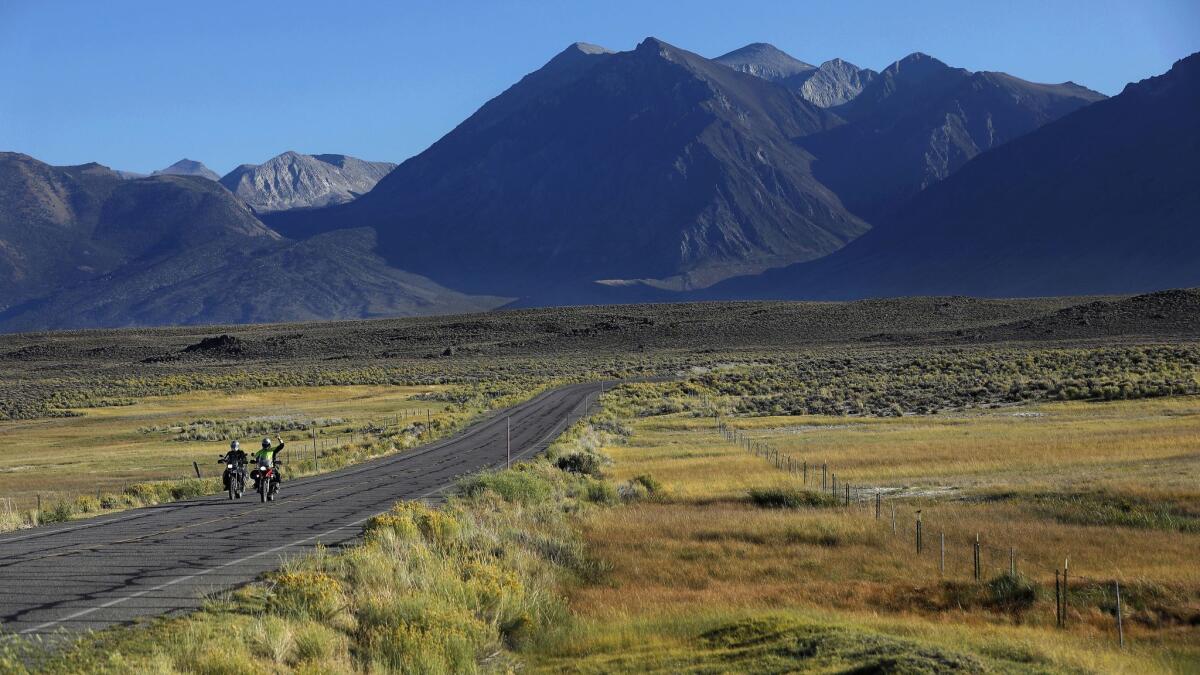
As residents grapple with how to plan for a future with so many unknowns, many have sought refuge in helping others.
Although Mono County doesn’t have the political power of its coastal neighbors, it does have a strong community of people who are busy sewing masks for healthcare and other essential workers.
In Inyo County, within a few days of a call for volunteers,120 people signed up to sew and quilt masks for workers.
For locals, banding together is a familiar feeling, an act replicated during wildfire season or any time a natural disaster strikes. In Inyo, with one of the state’s largest percentages of residents 65 and older, neighbors are checking in on neighbors, going block by block, making sure the elderly have what they need.
“In small, rural, isolated towns there are a lot of people who really want to help out,” said Inyo County Supervisor Jeff Griffiths. “We have food delivery for seniors who are quarantined, personal shopping for people who shouldn’t be going out at all, check-up calls for older folks living by themselves, and we also have a volunteer hotline that is able to help people navigate the resources out there.”
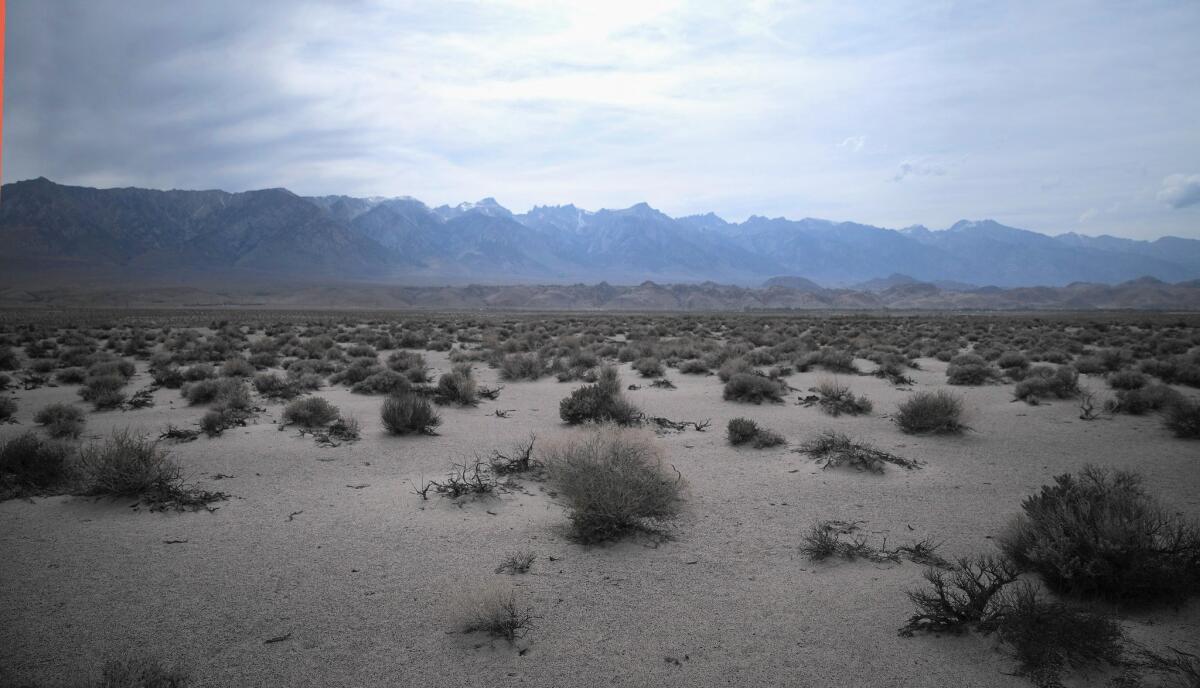
Inyo County has 19 confirmed COVID-19 cases and one coronavirus-related death. Healthcare workers “have the equipment that we need in the hospital setting,” Griffiths said. There are two critical access hospitals in the county, one with 24 beds and another with about 10, he said.
But Inyo has had difficulty keeping shelves stocked at its five grocery stores, Griffiths added. The county of 18,000, a stop along the road to the ski slopes of Mammoth Mountain, is a destination for campers, climbers and nature lovers who make trips to Death Valley National Park, the city of Bishop, Lone Pine and Badwater Basin. As in neighboring Mono County, tourism is a bedrock of the local economy.
“There’s been a bit of perception from people from the more metropolitan areas that this is a good place to escape to and that outdoor recreation is an appropriate thing to do during a pandemic,” Griffiths said.
The county has asked visitors to stay away until the virus is under control. It’s a loss for a region that would see hundreds — if not thousands — of climbers during peak season.
“We prioritize the safety of folks over recreation,” Griffiths said. “We love it when you visit, just don’t visit us right now.”
More to Read
Sign up for Essential California
The most important California stories and recommendations in your inbox every morning.
You may occasionally receive promotional content from the Los Angeles Times.

